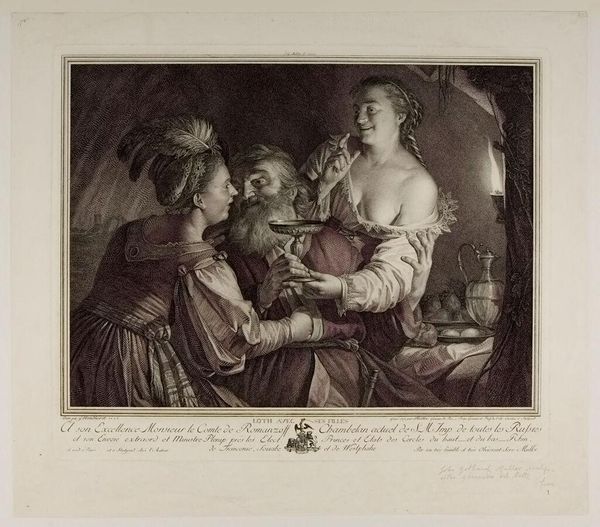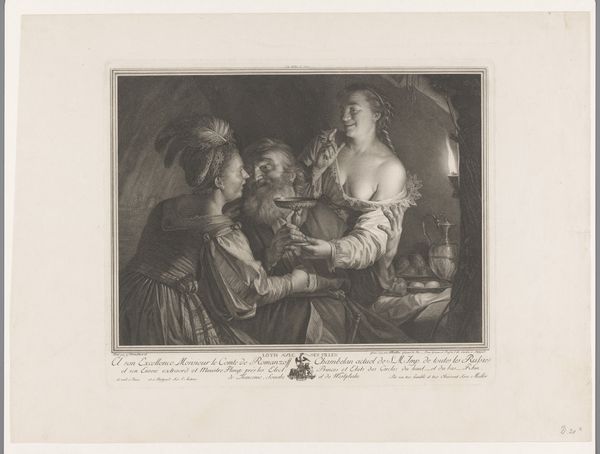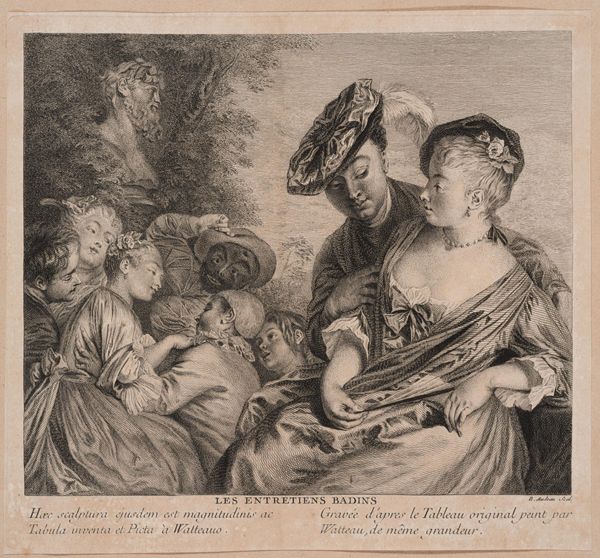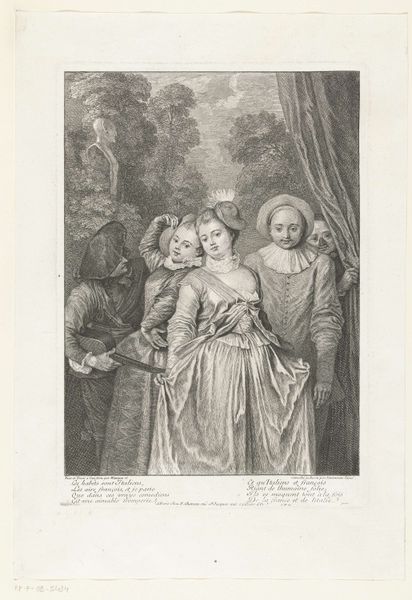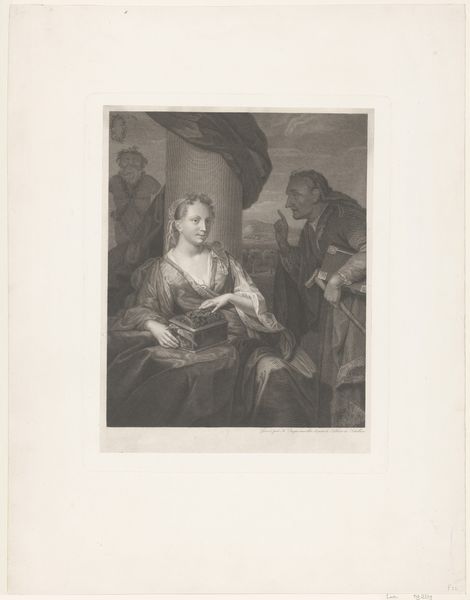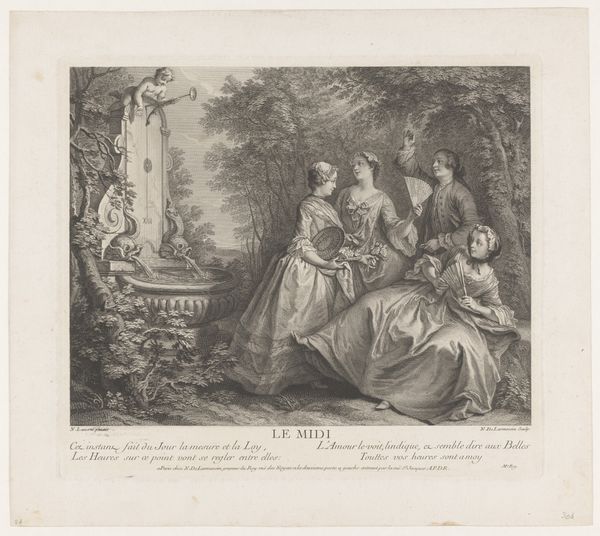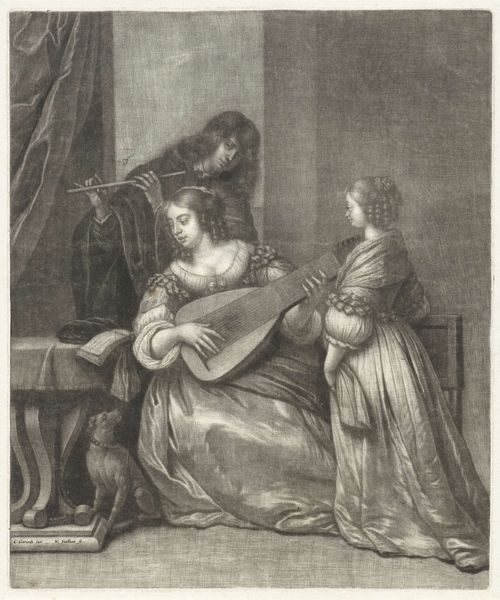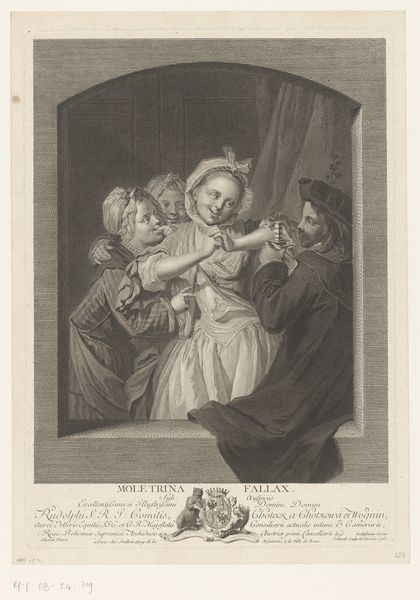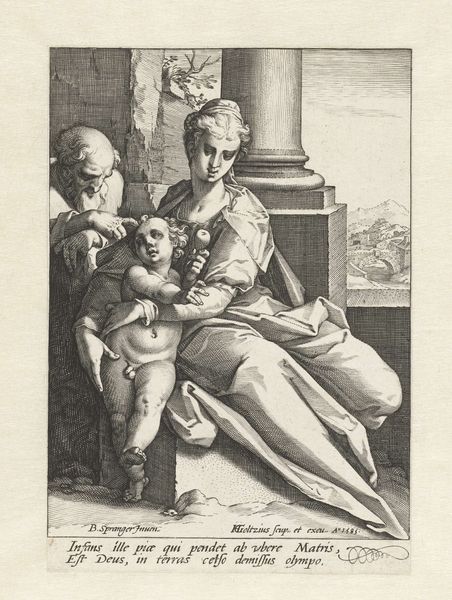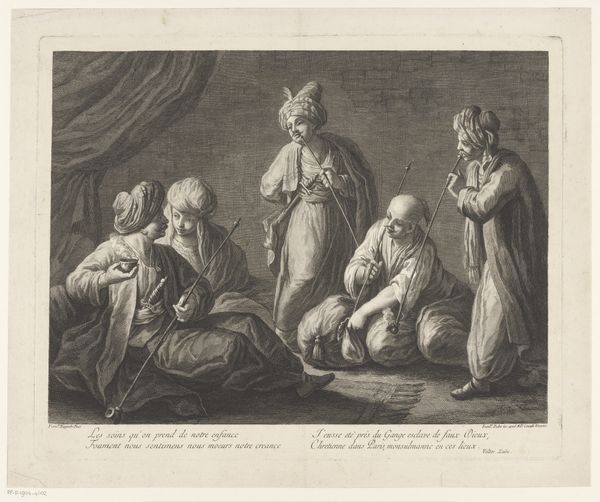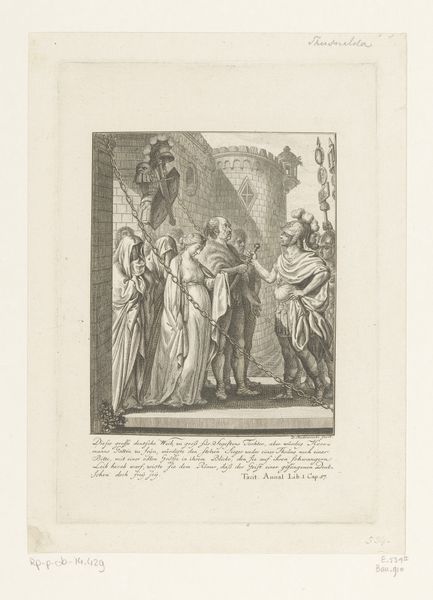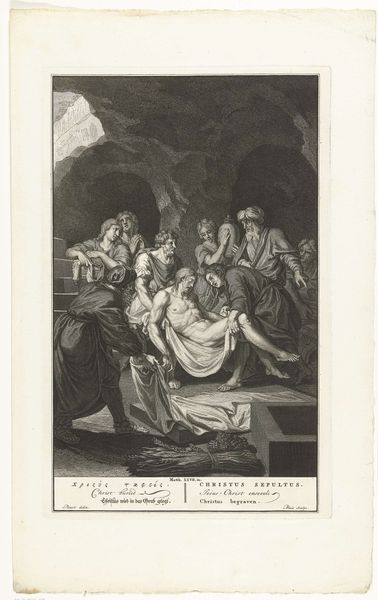
print, engraving
#
portrait
#
neoclacissism
#
narrative-art
# print
#
classical-realism
#
figuration
#
portrait reference
#
line
#
history-painting
#
academic-art
#
engraving
Dimensions: height 475 mm, width 492 mm
Copyright: Rijks Museum: Open Domain
Editor: This is "Cornelia Mother of the Gracchi", an engraving from 1796 by Marino Bovi. I'm immediately struck by its dramatic stillness. The figures are arranged so formally, almost like actors on a stage. What’s your read on this? Curator: Oh, yes, there's a potent quietness, isn't there? It whispers of virtues esteemed and stories told, lessons from Plutarch and Livy brought to visual life. Can you see how Bovi uses line, almost mathematically, to suggest moral clarity and, dare I say, *republican* virtue? The gaze of Cornelia, so calm and self-assured—it's less a portrait and more a *statement*. A rejection of frivolous displays. Editor: Republican virtue... So, it's a commentary on the values of the time? Curator: Precisely! Think of it as a visual argument during a revolutionary period. Rome as a model. "These are my jewels," Cornelia implies. Not trinkets, but principled sons. Notice how the "trinket-bearing" woman looks toward Cornelia—almost beseeching or, perhaps, envious? Which, by the way, do you think is Cornelia more “mother” or more "allegory?" Editor: I hadn't thought of that. Maybe more allegory. Her gaze is definitely... intense. A strong maternal figure *and* a symbol of Roman values. Curator: See? Your own eyes are unveiling this piece. It’s not merely lines on paper, it is a silent discourse on power, values, and motherhood itself! How do you look at *your* mother differently now? Editor: I suppose I'll need to think about that a little longer... This really sheds a new light on viewing art.
Comments
No comments
Be the first to comment and join the conversation on the ultimate creative platform.
